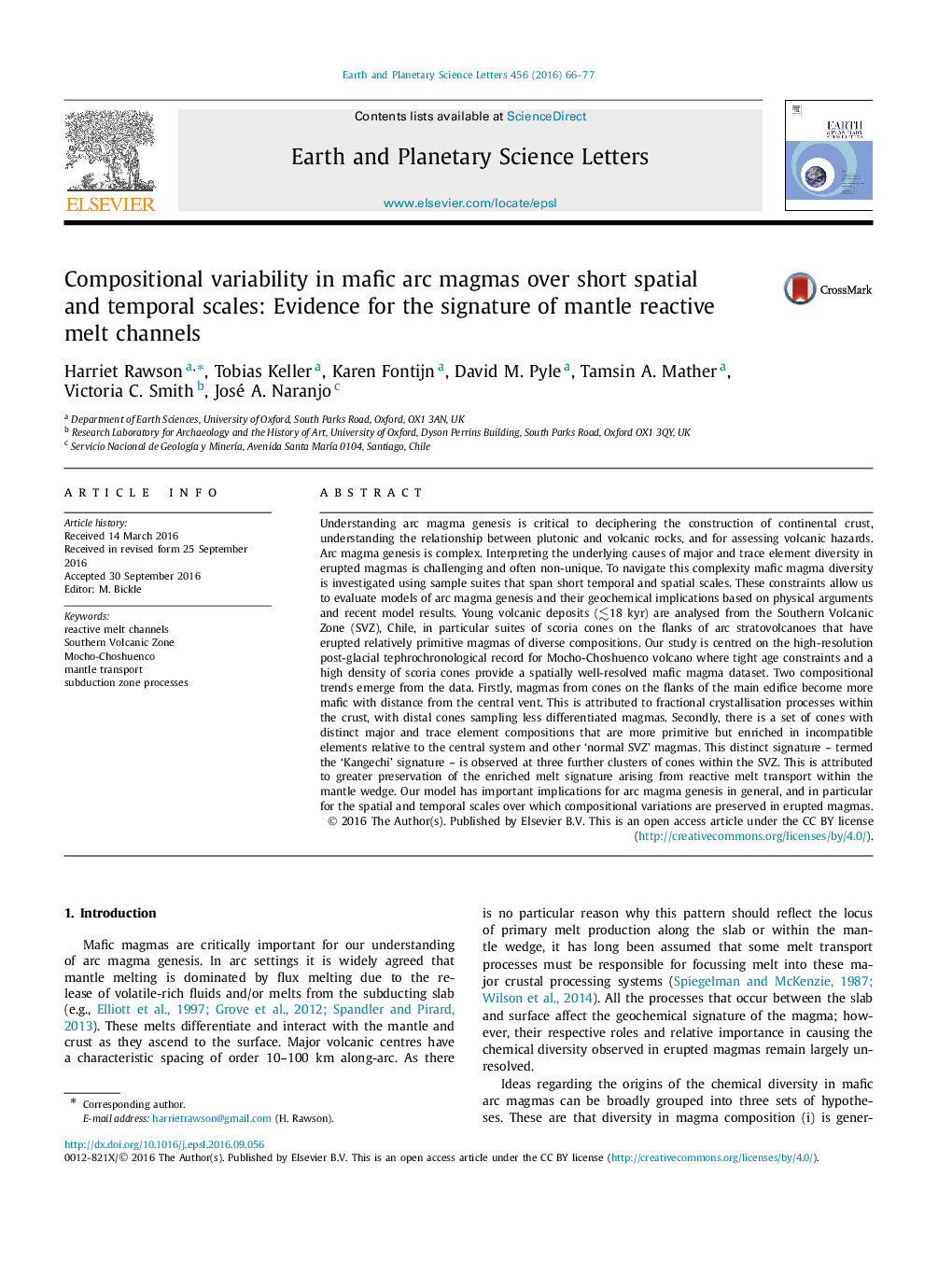| Article ID | Journal | Published Year | Pages | File Type |
|---|---|---|---|---|
| 6427068 | Earth and Planetary Science Letters | 2016 | 12 Pages |
â¢Mafic magmas with diverse compositions are found to coexist and co-erupt.â¢Large geochemical variation can be induced by reactive channels in the mantle wedge.â¢Melt transport regime controls time/length scales melt heterogeneity is preserved.â¢Enriched magmas directly tap reactive melt channels assisted by tectonic fracture.
Understanding arc magma genesis is critical to deciphering the construction of continental crust, understanding the relationship between plutonic and volcanic rocks, and for assessing volcanic hazards. Arc magma genesis is complex. Interpreting the underlying causes of major and trace element diversity in erupted magmas is challenging and often non-unique. To navigate this complexity mafic magma diversity is investigated using sample suites that span short temporal and spatial scales. These constraints allow us to evaluate models of arc magma genesis and their geochemical implications based on physical arguments and recent model results. Young volcanic deposits (â²18 kyr) are analysed from the Southern Volcanic Zone (SVZ), Chile, in particular suites of scoria cones on the flanks of arc stratovolcanoes that have erupted relatively primitive magmas of diverse compositions. Our study is centred on the high-resolution post-glacial tephrochronological record for Mocho-Choshuenco volcano where tight age constraints and a high density of scoria cones provide a spatially well-resolved mafic magma dataset. Two compositional trends emerge from the data. Firstly, magmas from cones on the flanks of the main edifice become more mafic with distance from the central vent. This is attributed to fractional crystallisation processes within the crust, with distal cones sampling less differentiated magmas. Secondly, there is a set of cones with distinct major and trace element compositions that are more primitive but enriched in incompatible elements relative to the central system and other 'normal SVZ' magmas. This distinct signature - termed the 'Kangechi' signature - is observed at three further clusters of cones within the SVZ. This is attributed to greater preservation of the enriched melt signature arising from reactive melt transport within the mantle wedge. Our model has important implications for arc magma genesis in general, and in particular for the spatial and temporal scales over which compositional variations are preserved in erupted magmas.
